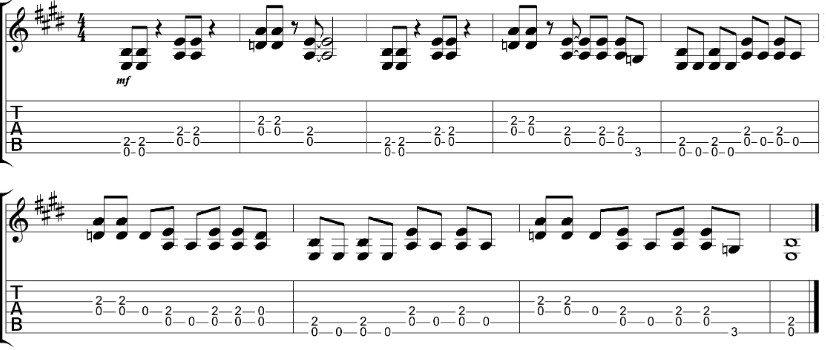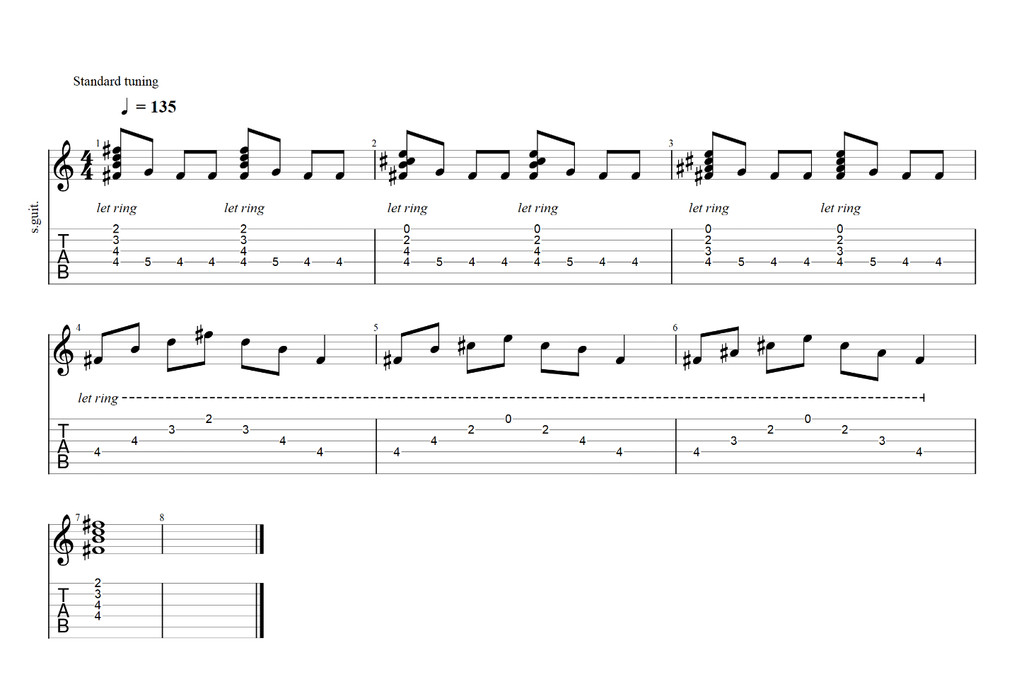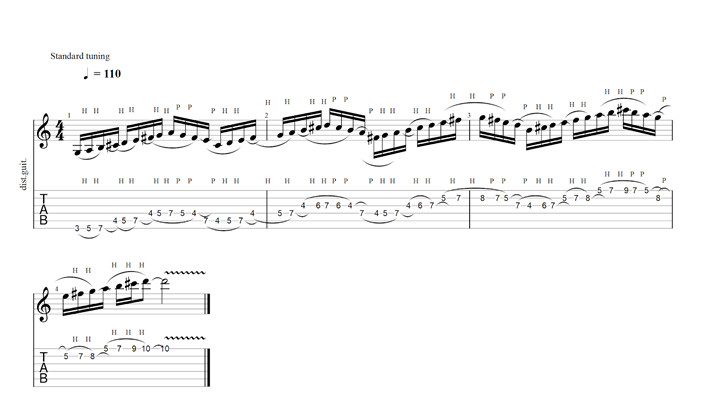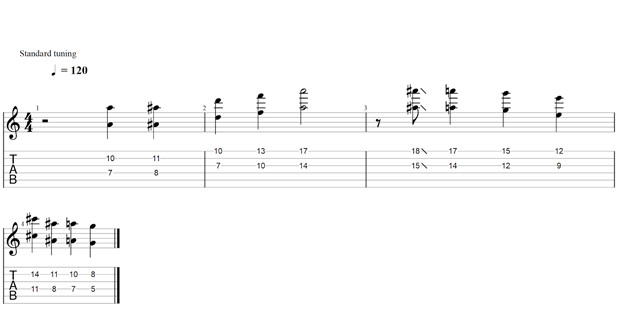For guitar players, the terms “riff” and “lick” get thrown around a lot. You hear them in lessons, read them in articles, and maybe even use them yourself. But if you’re being honest, do you truly understand the guitar riff meaning and how it differs from a lick? If you’ve ever felt a little fuzzy on the distinction, you’re definitely not alone. Many guitarists, even seasoned players, can struggle to clearly define these fundamental concepts.
This lack of clarity can be more than just confusing terminology. It can actually hinder your musical growth, especially when you’re trying to write your own songs or communicate musical ideas with other musicians. Imagine trying to explain the backbone of a song without knowing the proper term for it!
That’s why we’re diving deep into the world of guitar riffs in this guide. We’ll not only define guitar riff meaning in clear, accessible language, but we’ll also explore its importance, give you tons of examples, and show you how it differs from those often-confused guitar licks. Get ready to finally understand the heart and soul of countless iconic songs.
 Guitarist playing a riff with passion
Guitarist playing a riff with passion
What Exactly is a Guitar Riff?
Let’s cut to the chase and define guitar riff meaning directly. At its core, a guitar riff is a short, repeated musical phrase, often played on the guitar, that serves as a foundational element of a song. Think of it as a catchy musical hook, a recurring motif that instantly grabs your attention and becomes intrinsically linked to the song’s identity.
It’s more than just a random sequence of notes; a riff is a deliberate and crafted musical idea. Often, riffs are introduced at the very beginning of a song, setting the tone and instantly letting you know what you’re about to hear. Consider the legendary intro to Guns N’ Roses’ “Sweet Child O’ Mine.” That iconic melody, instantly recognizable and deeply ingrained in popular culture, is a prime example of a guitar riff. It’s not just a part of the song; it is the song in many ways.
 Tablature example of a classic guitar riff
Tablature example of a classic guitar riff
The Power Behind the Riff: Why Riffs Resonate
Guitar riffs are more than just musical decoration; they are powerful tools that shape the entire listening experience. Here’s why riffs are so crucial:
- Creating Instant Recognition: A great riff acts like a sonic fingerprint for a song. It’s the element that listeners instantly recognize, hum along to, and associate with the track. Imagine Led Zeppelin’s “Stairway to Heaven” without its opening guitar figure – unthinkable, right? The riff is the song’s immediate identifier.
- Setting the Mood and Tone: Riffs are masters of atmosphere. A heavy, distorted riff like the one in Black Sabbath’s “Paranoid” instantly sets a dark and aggressive tone. Conversely, a bright, jangly riff can evoke feelings of joy and energy. The riff dictates the initial emotional landscape of the song.
- Providing a Musical Foundation: Riffs often serve as the rhythmic and harmonic backbone upon which the rest of the song is built. They provide a repeating structure that other instruments and vocals can latch onto. Think of Deep Purple’s “Smoke on the Water.” That simple, powerful riff is the unwavering foundation of the entire song.
- Driving the Song Forward: The repetitive nature of a riff creates momentum and drive. It propels the song forward, creating a sense of energy and anticipation. Listen to the relentless riff in Rage Against the Machine’s “Killing in the Name” – it’s pure, unadulterated drive.
A Riff Roll Call: Iconic Examples to Inspire
To truly grasp guitar riff meaning, let’s explore some legendary examples that have shaped music history:
- “Voodoo Child (Slight Return)” – Jimi Hendrix: A raw, electrifying, and utterly unforgettable riff that showcases Hendrix’s genius.
- “Beat It” – Michael Jackson (featuring Eddie Van Halen): A hard-rocking riff that unexpectedly propelled a pop song into stadium anthem territory.
- “No One Knows” – Queens of the Stone Age: A hypnotic, groovy, and relentlessly catchy riff that defines modern rock cool.
- “Satisfaction” – The Rolling Stones: A raw, bluesy, and timeless riff that embodies rock and roll rebellion.
- “Seven Nation Army” – The White Stripes: A deceptively simple yet monstrously effective riff that became a global phenomenon.
- “Paranoid” – Black Sabbath: The quintessential heavy metal riff – dark, ominous, and groundbreaking.
- “Back in Black” – AC/DC: Arguably the most iconic rock riff ever, a masterclass in power and simplicity.
- “Smells Like Teen Spirit” – Nirvana: The riff that defined a generation – angsty, anthemic, and instantly recognizable.
This is just a small taste, of course. Countless other riffs have achieved legendary status, each contributing to the rich tapestry of guitar-driven music.
 Image of classic rock guitarists playing iconic riffs
Image of classic rock guitarists playing iconic riffs
Guitar Riff vs. Guitar Lick: Unraveling the Difference
Now, let’s tackle the common point of confusion: the difference between a guitar riff and a guitar lick. While both are short musical phrases played on the guitar, their purpose and function within a song are distinct.
Think of it this way:
-
Guitar Riff: The foundation of a song. It’s a recurring musical idea that defines the song’s identity, often repeated throughout the song, especially in the intro and verses. It’s designed to be memorable and instantly recognizable. Riffs are generally fixed and don’t change much during a performance.
-
Guitar Lick: An embellishment or flourish. It’s a short, melodic phrase often used in solos, fills, or transitions to add interest and showcase a guitarist’s skill. Licks are often improvised or varied during performances. Think of them as short bursts of melodic energy. Licks are more about the individual guitarist’s expression within a song’s structure.
Here’s a table summarizing the key distinctions:
| Feature | Guitar Riff | Guitar Lick |
|---|---|---|
| Function | Foundation of a song, defines identity | Embellishment, adds interest, showcases skill |
| Repetition | Repeated throughout the song | Often played once or a few times, with variations |
| Variability | Generally fixed, rarely changed | Often improvised or varied in performance |
| Memorability | Highly memorable, core song element | Can be memorable, but less central to song identity |
| Placement | Intro, verse, chorus, throughout the song | Solos, fills, transitions |
| Instrumentation | Can be adapted for various instruments | Primarily guitar-focused |
Analogy Time: Imagine building a house. The riff is like the foundation and framing – essential structural elements that define the house’s shape and stability. The lick is like the decorative trim or a unique paint color – it adds personality and flair, but it’s not structural.
 Image comparing a riff as a foundation and a lick as decoration
Image comparing a riff as a foundation and a lick as decoration
Diving Deeper into Guitar Licks
While guitar riff meaning centers on the foundational aspect of a song, guitar licks are all about adding spice and personal expression.
Guitar licks are short, melodic phrases that guitarists use to:
- Improvise and Solo: Licks are the building blocks of guitar solos. Guitarists string licks together, often improvising and varying them, to create extended melodic passages.
- Fill Space: Licks can be used to fill in gaps between vocal phrases or during instrumental breaks, adding musical interest and momentum.
- Add Flair and Showmanship: A well-placed lick can inject energy and excitement into a performance, showcasing a guitarist’s technical skills and musicality.
Think of guitar licks as a guitarist’s vocabulary. The more licks you learn and internalize, the wider your expressive range becomes. Just like a spoken language, you can combine and modify licks to create your own musical “sentences.”
 Image of a guitarist improvising a lick during a solo
Image of a guitarist improvising a lick during a solo
Getting Hands-On: Riffs and Licks to Try Yourself
Theory is great, but the best way to understand guitar riff meaning and licks is to play them! Here are some beginner-friendly examples to get your fingers moving:
Beginner Guitar Riffs:
-
Power Chord Riff: This riff utilizes power chords, a staple of rock and metal. Palm muting (lightly resting your palm on the strings near the bridge) adds a heavier, chunkier sound.
 Tablature for a power chord riff
Tablature for a power chord riff(Chords used: E5, A5, D5)
-
Funky Clean Riff: This riff uses a clean tone and a rhythmic, percussive feel, perfect for funk or rhythm guitar practice. Using your thumb on your fret hand to mute strings can enhance the funky vibe.
 Tablature for a funky clean guitar riff
Tablature for a funky clean guitar riff(Transpose to G for the next bars)
-
Acoustic Guitar Riff: A simple yet effective acoustic riff that demonstrates how riffs can set the tone even on an acoustic guitar.
 Tablature for an acoustic guitar riff
Tablature for an acoustic guitar riff Image of a person playing acoustic guitar riffs
Image of a person playing acoustic guitar riffs
Guitar Licks to Explore:
-
Joe Satriani Inspired Lick: This lick draws inspiration from the technically brilliant Joe Satriani, incorporating slightly more advanced techniques.
 Tablature for a Joe Satriani style lick
Tablature for a Joe Satriani style lick Image of Joe Satriani style guitar playing
Image of Joe Satriani style guitar playing -
Wes Montgomery Inspired Lick: This lick pays homage to jazz guitar legend Wes Montgomery, known for his unique thumb-picking style and improvisational genius.
 Tablature for a Wes Montgomery style lick
Tablature for a Wes Montgomery style lick
Mastering Riffs and Licks: The Journey Continues
Understanding guitar riff meaning and the nuances of guitar licks is a crucial step in your guitar journey. Riffs are the cornerstones of countless songs, the hooks that draw us in and stay with us long after the music stops. Licks are the sparks of individual expression that add excitement and dynamism to guitar playing.
By learning to identify, play, and even write your own riffs and licks, you’ll deepen your musical understanding, expand your playing vocabulary, and gain a greater appreciation for the artistry of guitar-driven music. So, grab your guitar, explore the examples we’ve discussed, and keep experimenting. The world of riffs and licks is vast and rewarding, and there’s always more to discover.
